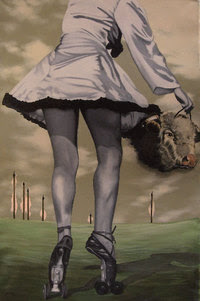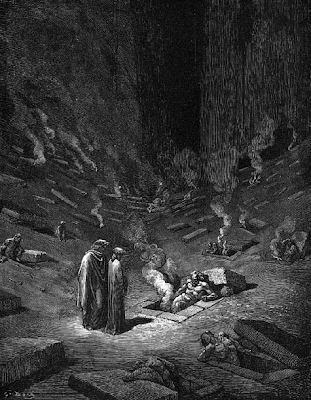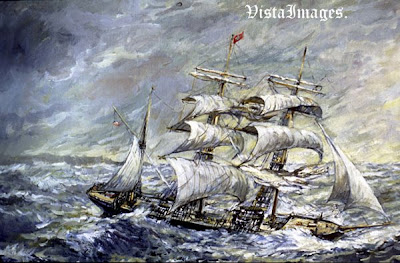If you saw the Powell/Pressberger film "Red Shoes" and didn't like it then you're not going to like this film either, because it's Red Shoes on steroids.
The opera was written by Offenbach in 1880 or thereabouts. He died months before the play opened and while the music and libretto were still undergoing changes, a significant fact it turns out.
Since there were different and disputed versions of the original manuscript, successive producers took liberties with the opera and customized it to their liking.
That liability turned out to be an asset. The opera is never without backers who want to attach their own vision to it and as a result it's been staged frequently and creatively through the years, with enormous variety in the art direction.
The Powell/Pressberger version (above) is a tour de force of visual style. It ranges from a kind of dry-brushy, modern type...
...to designs derived from old tapestries and beer steins...
...to a kind of impressionistic surrealism (above) reminiscent of Odilon Redon.
I'll digress for a moment to explain that Redon (his work, above) was a French symbolist painter of the 19th Century. That movement was a precursor of Surrealism. You don't hear a lot about it anymore, and it's not really my taste, but it was tremendously influential in theatrical design.
Anyway, the dominant background style of the film is a surreal take on the traditional Romantic ballet style (above). Even in that context there's plenty of innovation. Take this shot, for example. Note the color and lighting on the archway of marionette heads.
There's a cut to a close-up as the ballerina dances closer to camera and when we return to a wider shot the colors and lighting have changed. Not only that but the marionette heads have been switched for slightly different ones. Look closely...some of them aren't the same.
Martin Scorsese is a big fan of this film. He likes the unreality of it and claims that he learned how to compose cinematic scenes from it. He also got the idea of shooting to music from this film.
Here's the trailer. If you buy it be careful, though. Americans will want the version that plays on our electronics.






































.jpg)





























